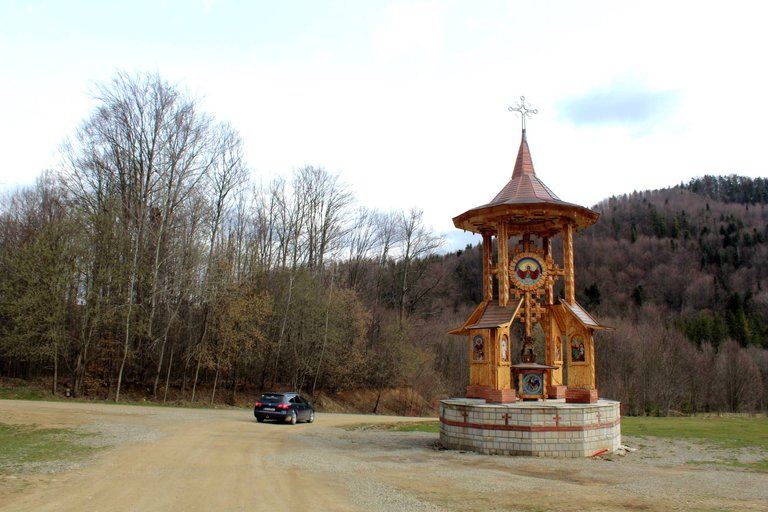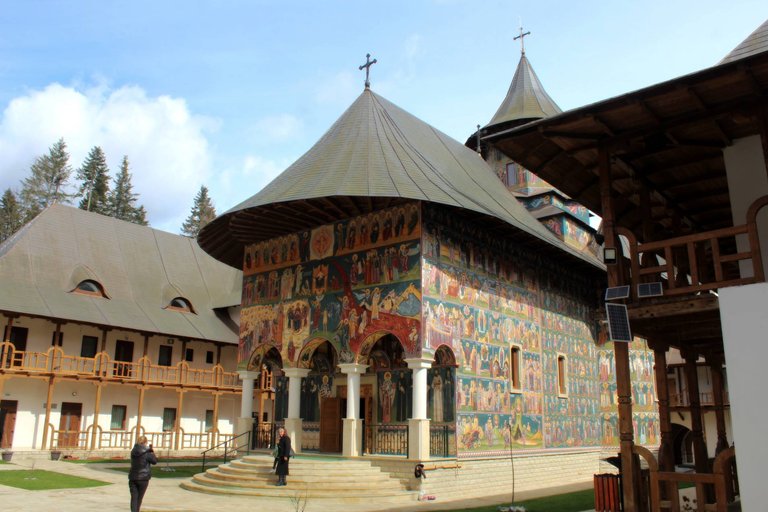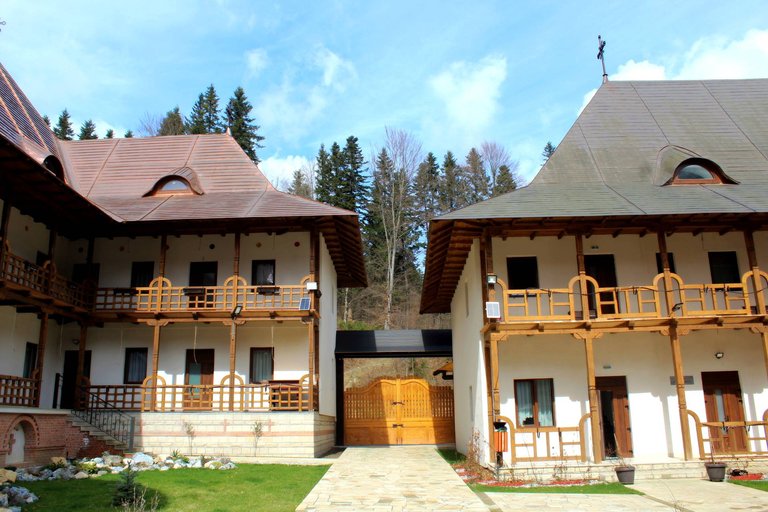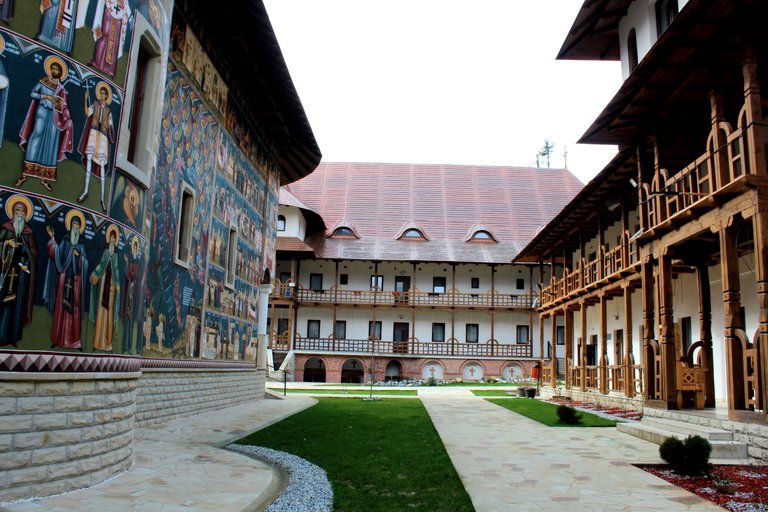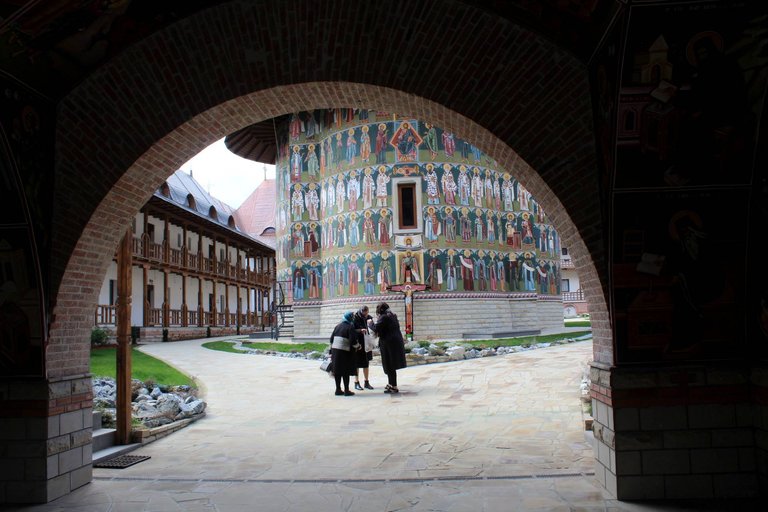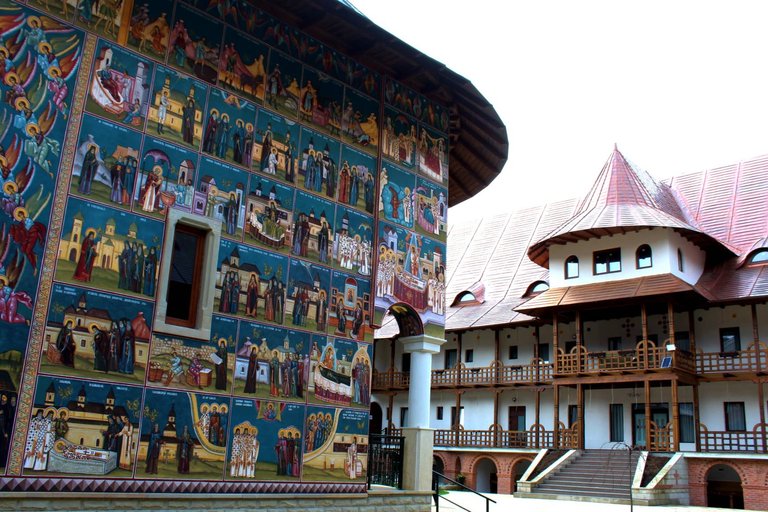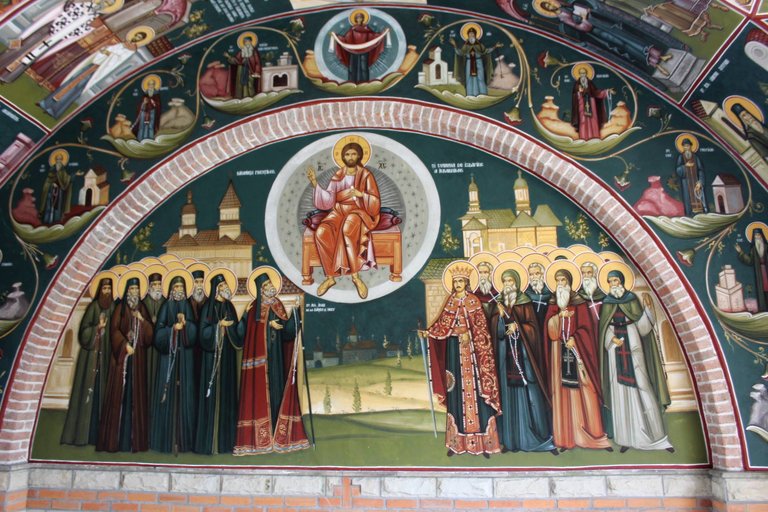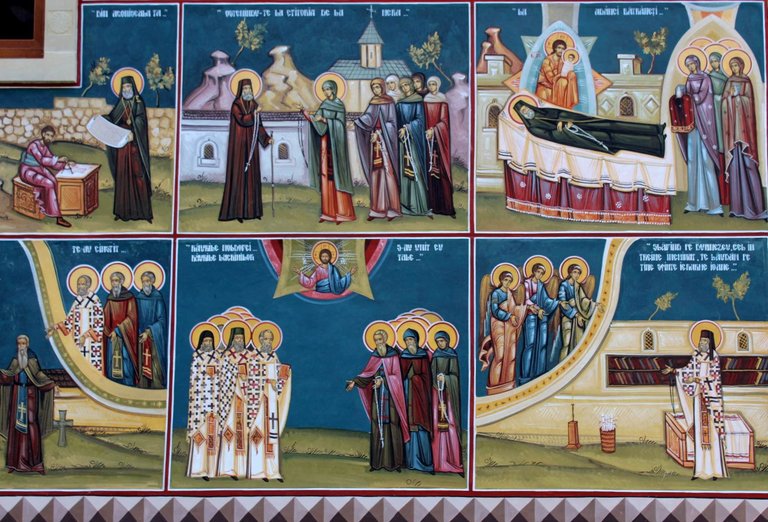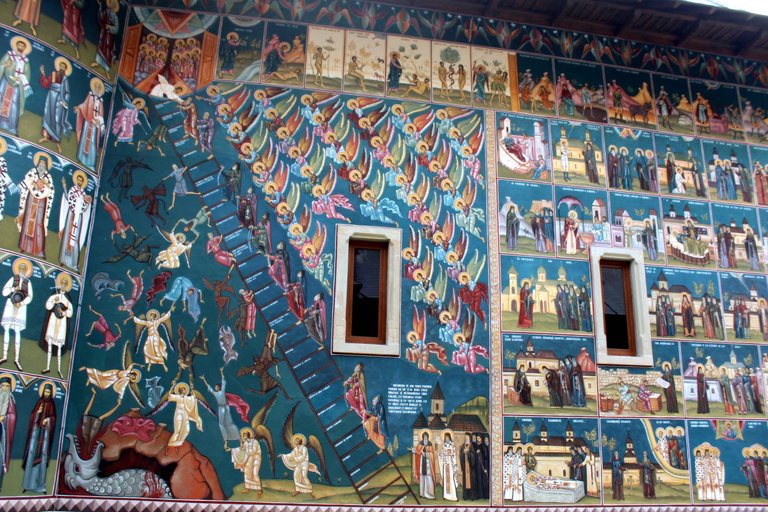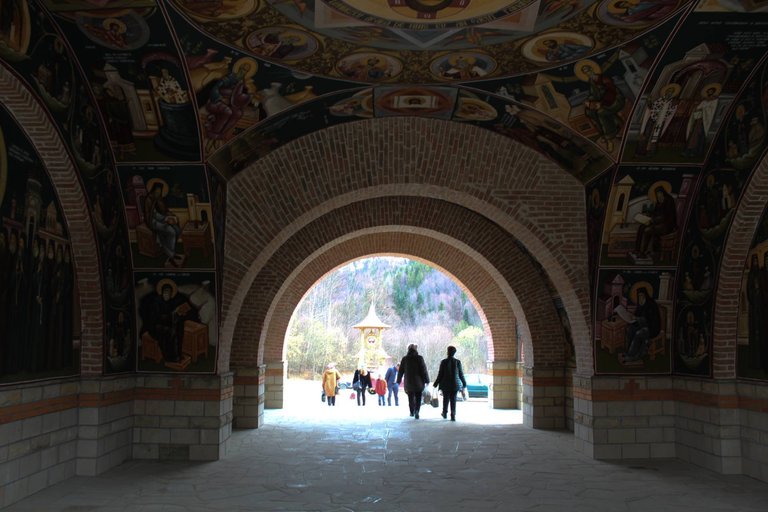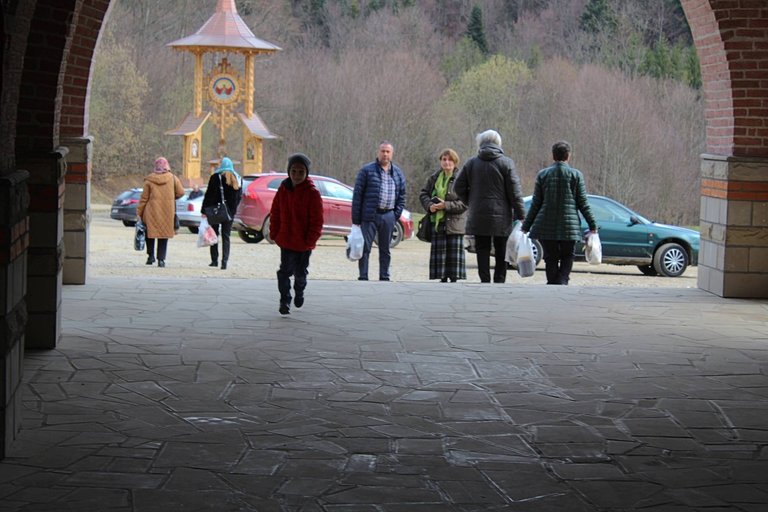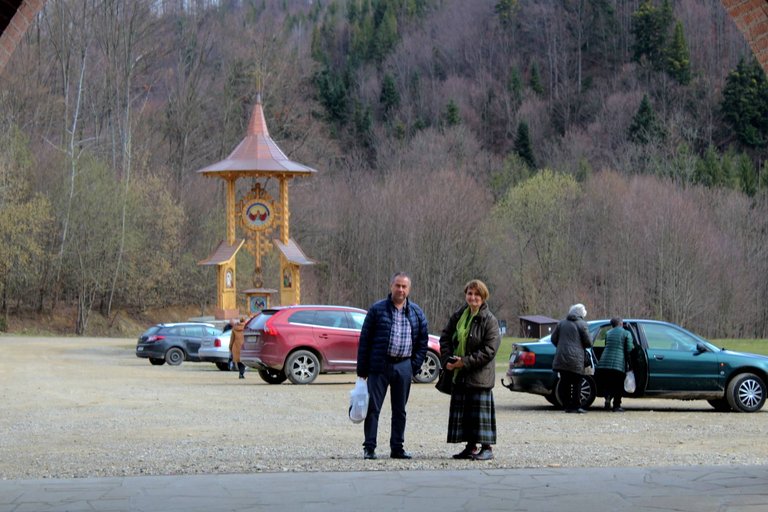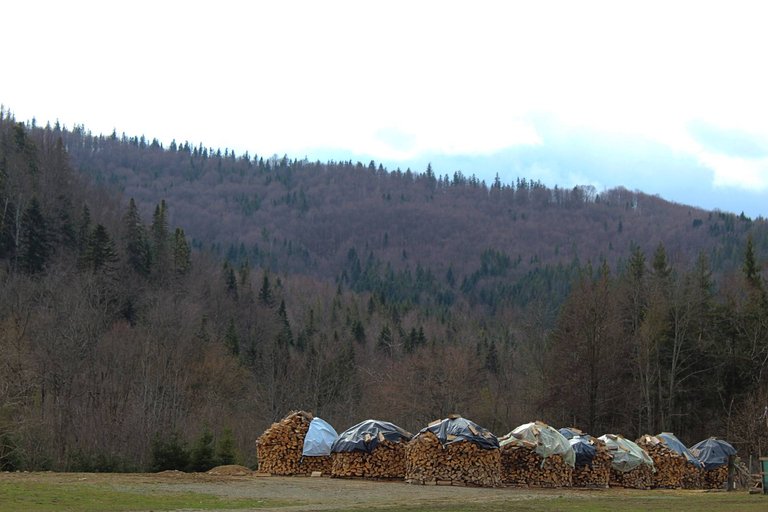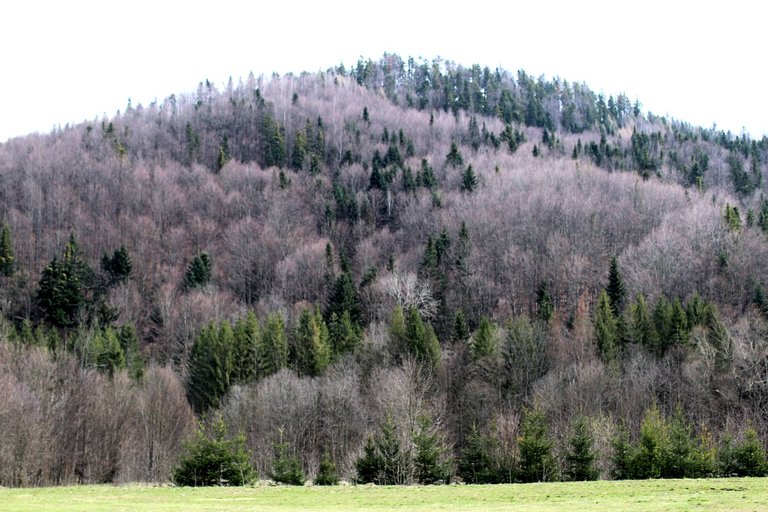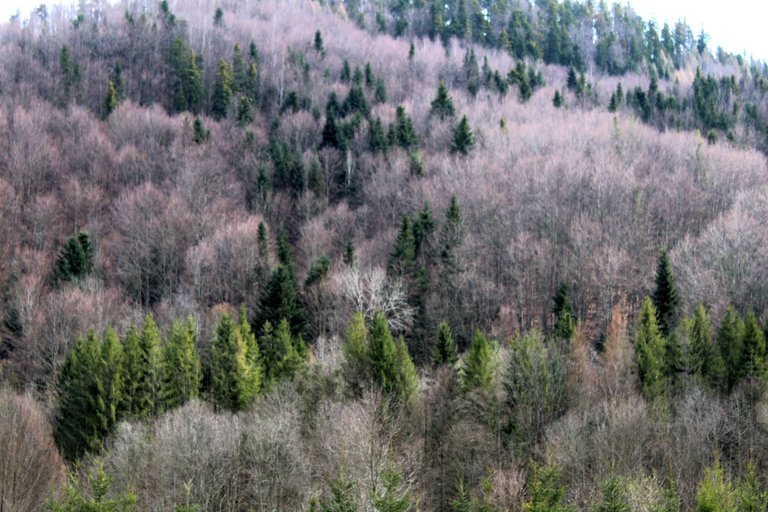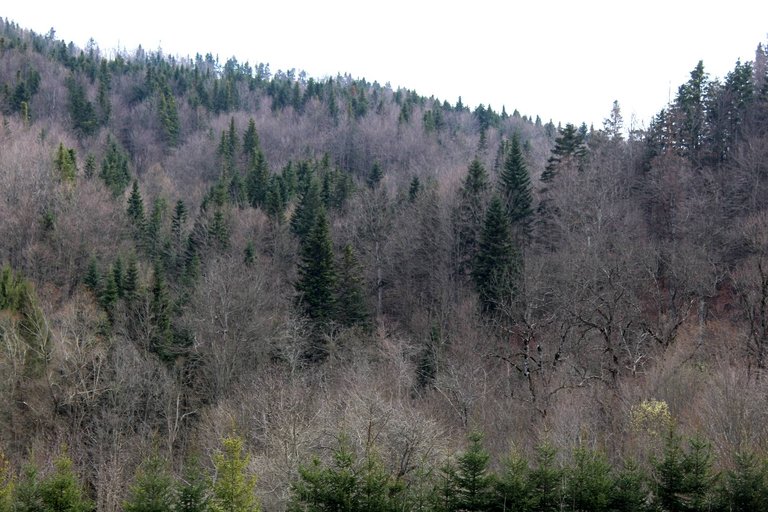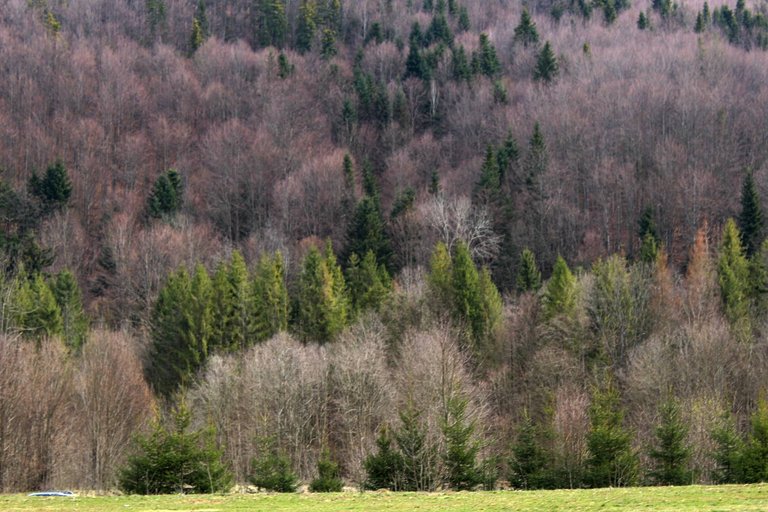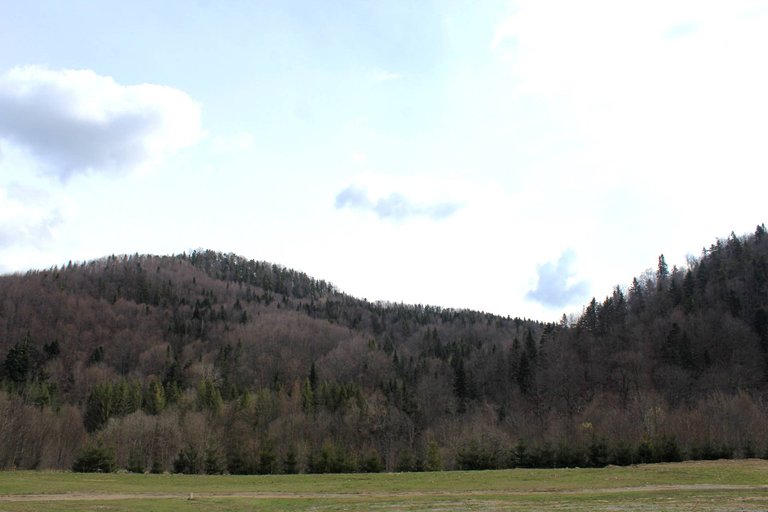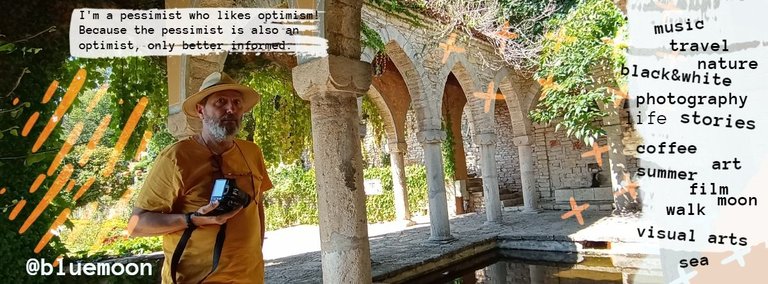There are (still) many forests in my country, Romania. There was more, a much larger forested area, but it kept shrinking because quality wood is good and brings a lot of money.
There was a saying in the past, and when I say past I think of a time that began in the Middle Ages, which says that "The Romanian is brother to the forest" in the sense that the forest provides both shelter and protection, as well as the necessities of life, namely food.
Now, unfortunately, the Roman is no longer a brother with the forest, he thinks he no longer needs it and when he can, he cuts a tree.
Fortunately, there were so many trees in the forests here that nobody managed to cut them all down!
In one such forest, I took a trip to visit a monastery. I was in the north of Romania, in a province where I grew up, called Bucovina.
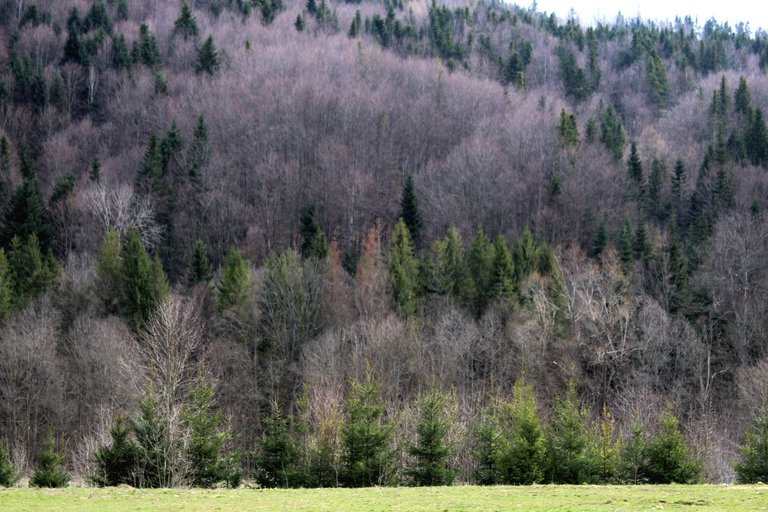
Another German name for the region, das Buchenland, is mostly used in poetry, and means 'beech land', or 'the land of beech trees'. In Romanian, in literary or poetic contexts, the name Țara Fagilor ('the land of beech trees') is sometimes used. Source
I used this extract to prove that Bucovina has always been full of forests.
Bucovina is also called "the land of monasteries" because there are dozens of very special monasteries, built in the XIV - XV centuries. They are the famous monasteries painted on the outside (and inside) and are one of the biggest tourist attractions in Romania!
The forests, with all their beauty, are just a decoration now. I came all this way for the monastery.
Characteristic for the monasteries in Bucovina is that almost all of them are built in the forest, they are surrounded by forest, more or less far from villages and towns. Believers and visitors come either on foot, but mostly by car and because of this there is a large plateau in front of the monastery often used as a parking lot. The monastery is called Sihastria Sfantul Ion de la Rasca , it was built in the last three years and was consecrated (i.e. inaugurated) in March this year. It is located about 15 km away from the monastery that gave it its name, Rasca Monastery, which is five hundred years old. The Monastery Sihastria Sfantul Ion de la Rasca There are several forest roads leading to the monastery. The entrance on the bare plateau where the building was erected is marked by a monument specific to Orthodox Christianity. The monastery of Sihastria Sfantul Ion de la Rasca, about which I tell here, is the first monastic complex that has a painted church both inside and outside. In this way hasn't been built for hundreds of years. The ancient monasteries were surrounded by very high walls and fortifications, just like a fortress able to prevent attackers from entering. At Sihastria Sfantul Ion de la Rasca these walls have been replaced with annexed buildings, that is the monks' monastery, the kitchen and dining room as well as other places where various activities are carried out. In a monastery the most important building is centrally located and is the church. This is where the monks "work", where they pray incessantly. The small distance between the church and the side buildings didn't allow me to photograph the whole monastery complex and I had to shoot in pieces. The entrance to the inner courtyard leads visitors to the back of the church... ... and they have two alleys leading to the entrance of the church. This seemingly wrong placement of the church is not an accident because the altar of the church should always be facing east. The most remarkable thing in this monastery is the exterior painting. This is the tradition of churches in Bucovina, the exterior painting. The paintings are not accidental, they are made according to laws and canons and represent characters and events described in the Bible, the book of Christianity. It is not known exactly why in the Middle Ages they chose to paint the churches and exterior walls. One hypothesis that I am inclined to believe is that because the vast majority of people were illiterate and could not read this holy book. So, by seeing the paintings in succession like a movie, they could understand religion more easily. Every beginning has an end and that's how we got to the moment when we left the monastery, not before looking again at this very special place that on holidays becomes uninhabitable because of the thousands of people who come here. I forgot to say that there is also a shop here with religious objects and different things made in this small community, from wine and honey... to mushrooms and pasta. As I hope you can see, most of the people who leave have sacks full in their hands. One last look back... ... and one ahead, beyond the monastery! The Forest "Relieved" by the beauty of the building and the painting, by the kindness of the monks and the temptations of their shop, we were able to cast our eyes on the woods around us. Over 10 km only through the forest. Too bad this time I only saw it from the car. I look forward to the next time I pay more attention to nature and the forest.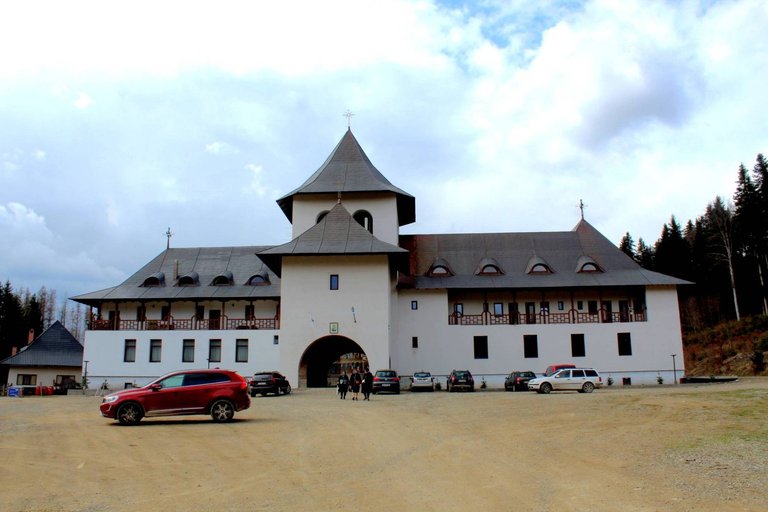
The Monastery Sihastria Sfantul Ion de la Rasca
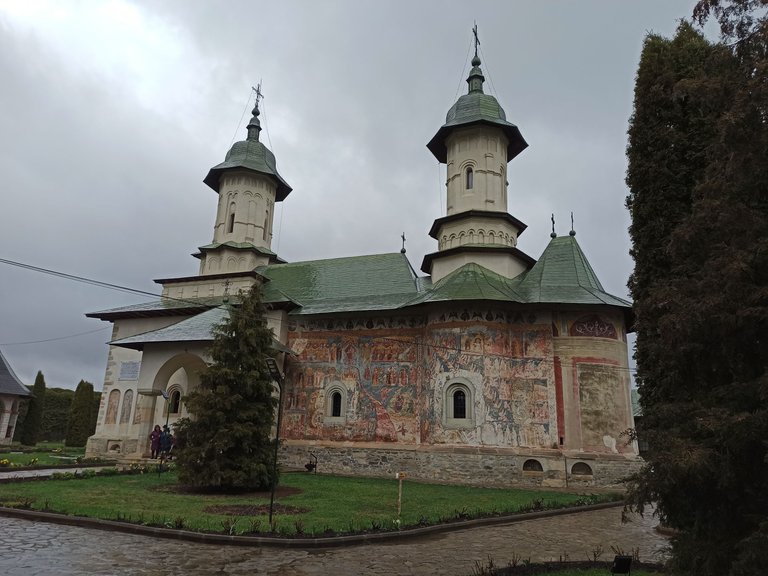
Rasca Monastery
